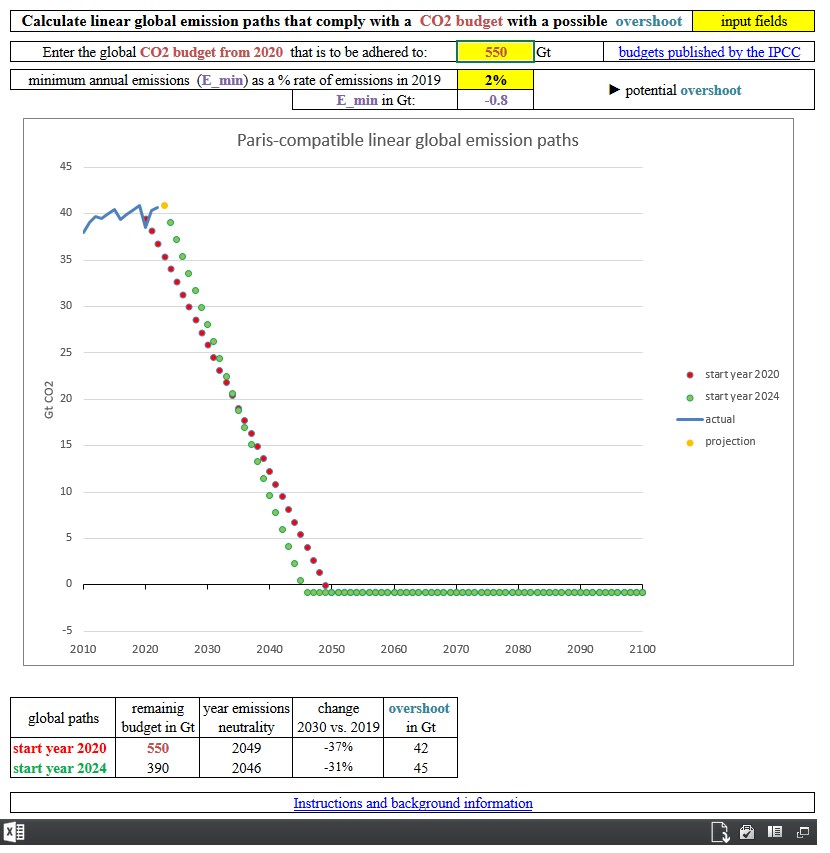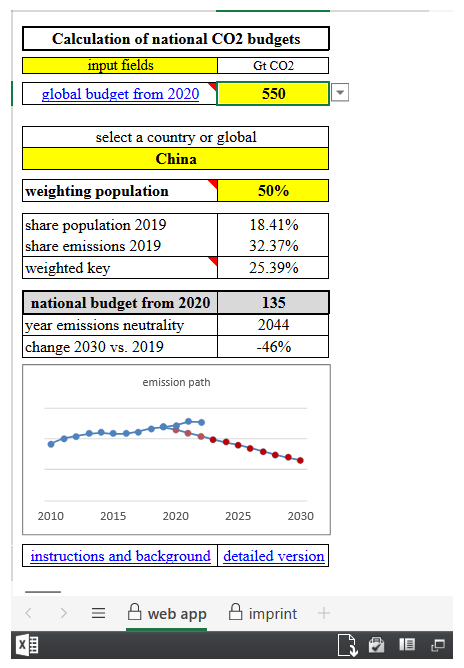CO2 budgets published by the IPCC
Overarching goal in the Paris Agreement is
to hold "the increase in the global average temperature to well below 2°C above pre-industrial levels" and pursue efforts "to limit the temperature increase to 1.5°C above pre-industrial levels." |
Remaining global CO2 budgets from 2020 on according to the IPCC Sixth Assessment Report
for different global warming levels with a compliance probability of 83%:
Warming |
Estimated remaining
carbon budgets |
|---|---|
[°C] |
[GtCO2 from 2020 on] |
1.5 |
300 |
1.6 |
400 |
1.7 |
550 |
1.8 |
650 |
We currently emit around 41 Gt per year.
We have summarised more detailed information here:
www.ipcc-co2-budgets.climate-calculator.info
Potential for temporary volume overshoot
In its 2018 report, the IPCC saw a potential for net negative emissions of up to -21 Gt in 2100.
The average for the four illustrative model paths used was -11 Gt in 2100.
More information, including about the problems of overshoot, can be found here.
CO2 clock
The MCC's CO2 clock is based on a compliance probability of 67% (1.5°C 400 Gt, 2°C 1,150 Gt) and
asks asks how long the global budget would last if global emissions remained the same.
Global paths
Web app for determining linear global reduction paths that comply with a predetermined CO2 budget:
National CO2 budgets
Web app for calculating Paris-compatible national CO2 budgets:
The web app takes the two decisive criteria into account:
(1) current reality
(2) climate justice
See the corresponding excursus here on the fundamental question of the criteria for allocating a global budget.
Here is a more detailed version of the app, which also includes a direct comparison with the NDCs of the six major emitters:
www.national-budgets.climate-calculator.info
Meeting national CO2 budgets
National CO2 budgets can best be adhered to through hard caps in emissions trading systems. To ensure that the resulting 'whatever-it-takes-CO2-prices' can be politically enforced and are fair, the entire auction proceeds should be distributed back to citizens as a per capita lump sum (climate dividend).
In parallel, an attempt should be made to agree standards for particularly CO2-intensive production processes (steel production, cement production, certain basic chemical processes, international aviation and shipping etc.) in a coalition of the willing (climate club).


